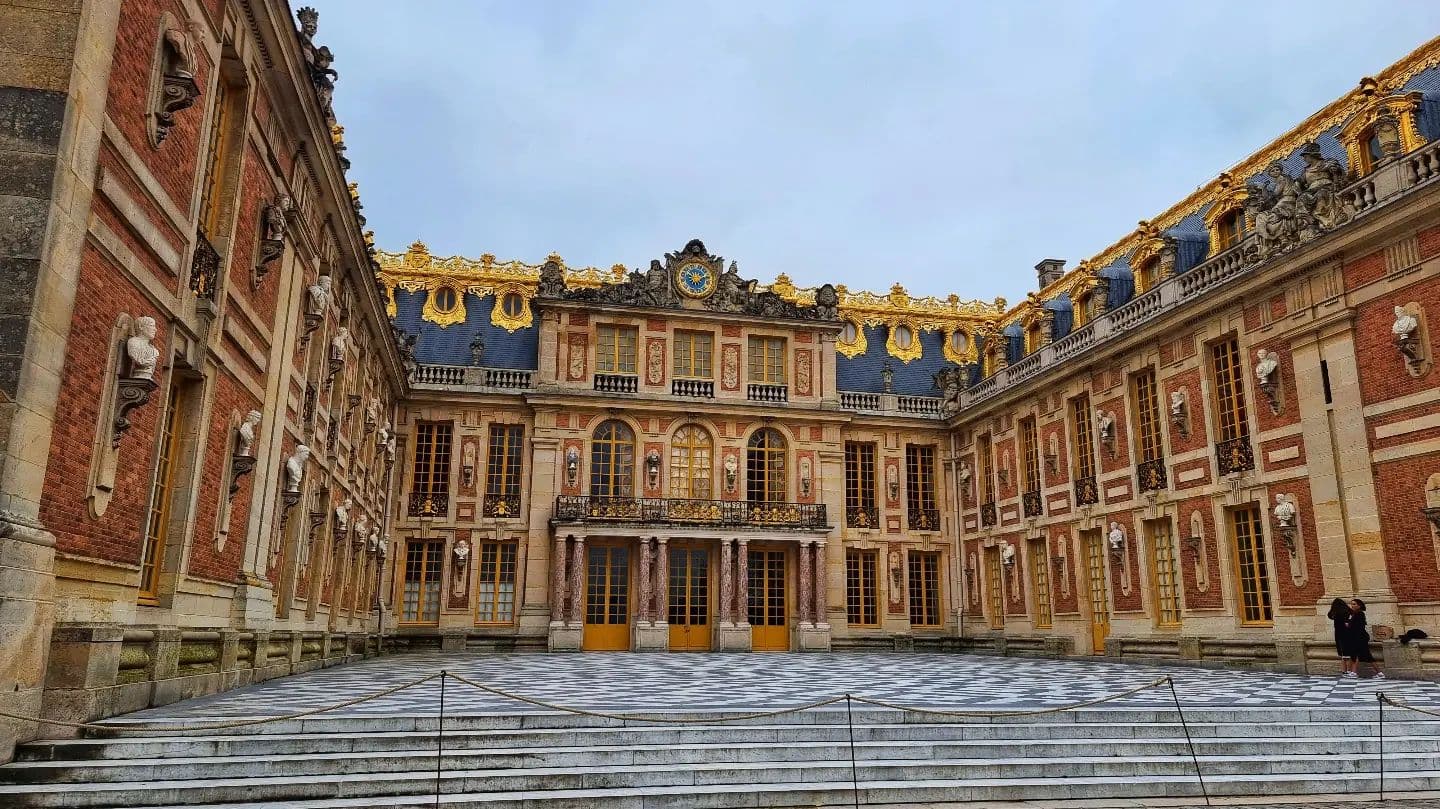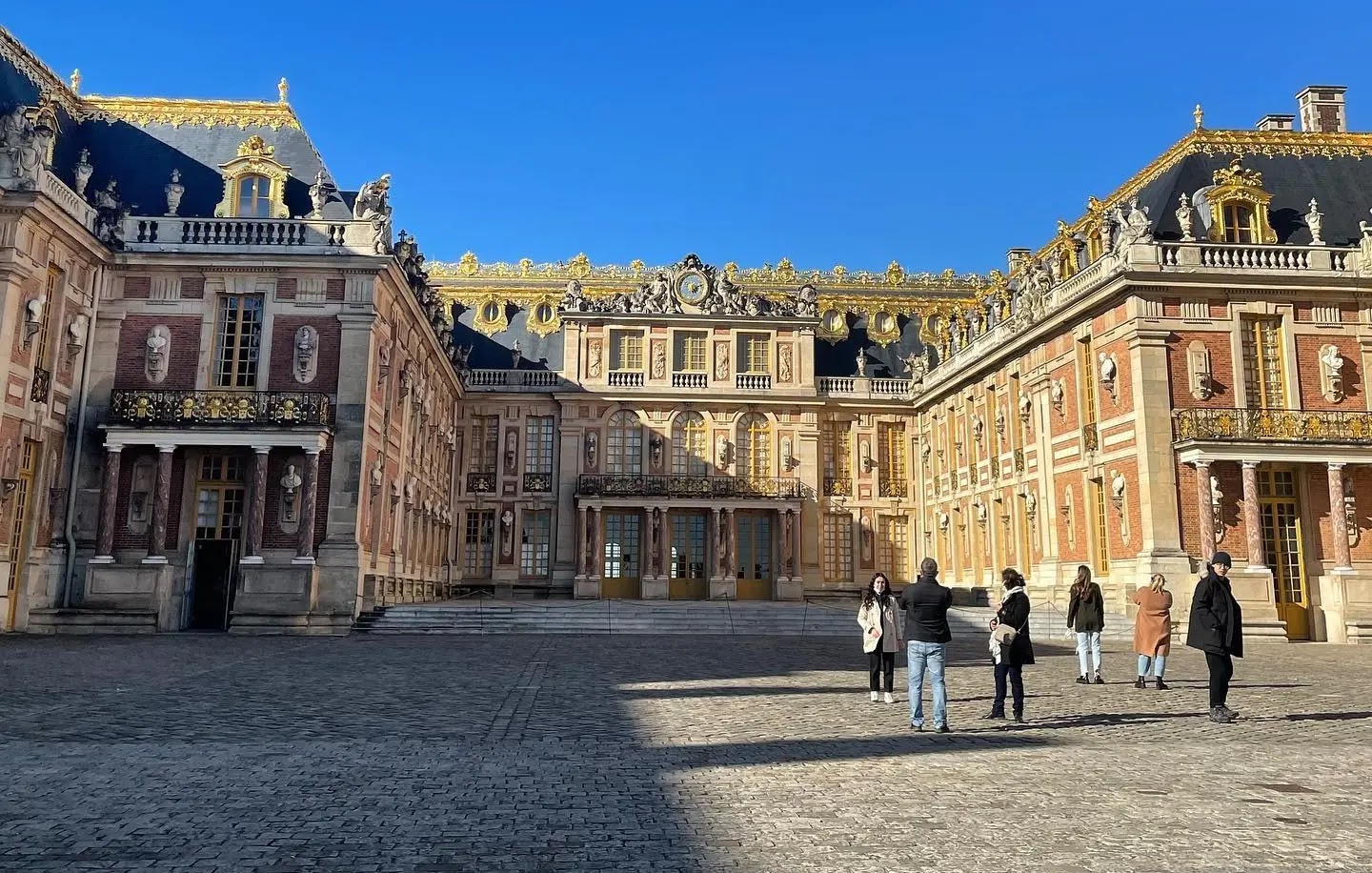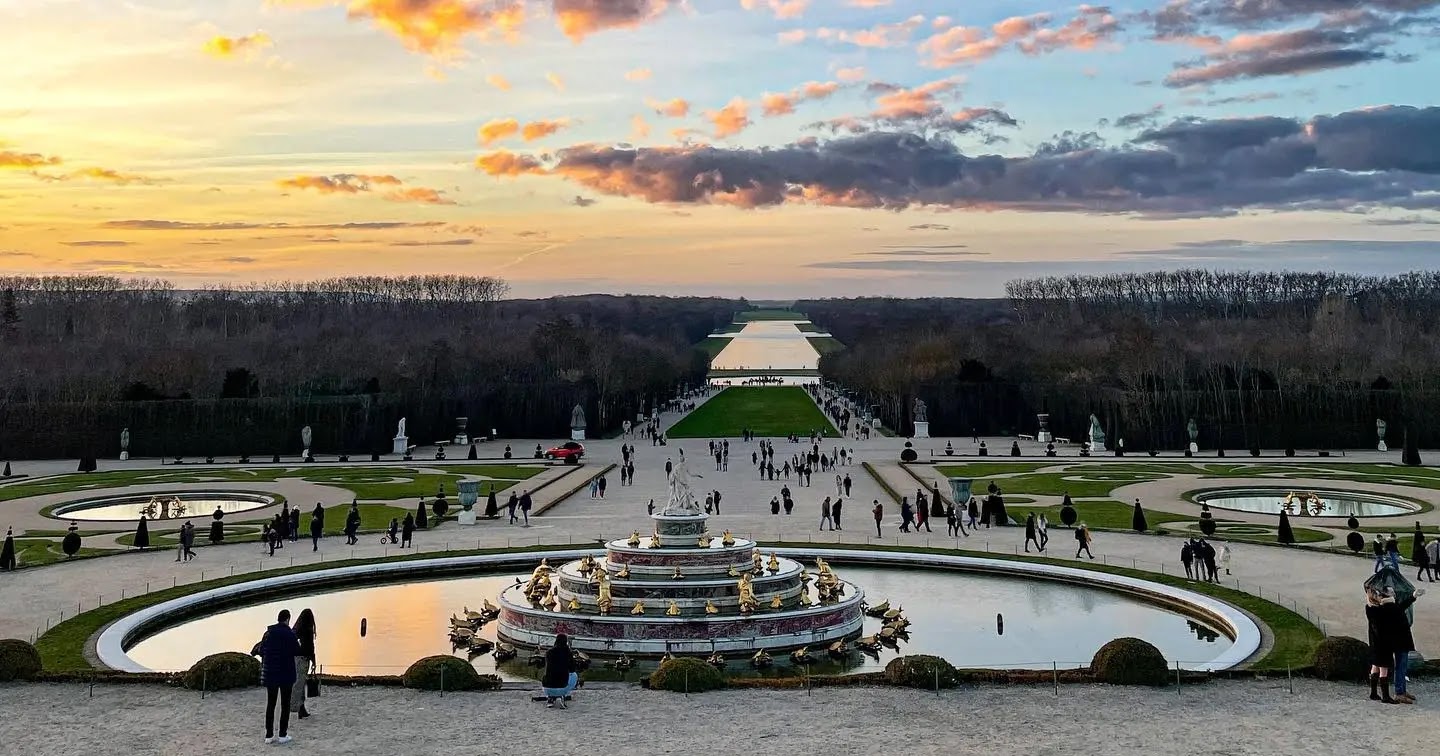● The Palace of Versailles
The Palace of Versailles is not only recognized as one of the most illustrious royal residences in the world but also as one of the most popular tourist destinations in the entirety of the city of Paris.
It is the greatest and most important royal palace in the history of the world, and several past French monarchs stayed there during their reigns, such as King Louis XIV, King Louis XV, and King Louis XVI. Additionally, it was constructed during the 16th century, when it was first established.
Around the same time as the Palace of Versailles was being built (1624), King Louis XIII of France gave orders for the building of a simple hunting lodge in the area around the palace. Because so many animals might be hunted in the region surrounding the Palace of Versailles, this was done there. This is because the Palace of Versailles is located in that area.
In the eleventh century, work on the building of the Palace of Versailles began in the Ile-de-France area of France. The palace was built fifty years ago and extends five hundred meters in length.
This palace, which had been a royal residence up to the end of King Louis XV's reign, which was brought to an end by the French Revolution, was transformed into a historical museum in 1837. Before that, it had served as a royal residence until the end of King Louis XV's reign. Before that time, it had been used by the royal family as their primary place of abode. As a result of its transformation into a massive complex surrounded by gorgeous gardens, the Palace of Versailles is currently considered one of the world's most famous museums. Additionally, it is a popular destination for tourists as a result of the fact that it is a popular destination for visitors. It is estimated that as many as five million people visit the grounds of the Palace of Versailles each and every single year.
● Where is the Versailles Palace?
The Palace of Versailles in France is around 25 kilometers away from Paris, the capital city of France. The palace's construction began in 1632 under the direction of King Louis XIII, who was also responsible for the palace's later expansion and repair.
In the years that followed, namely 1682, the residence of King Louis XIV of France was relocated there. Now, it can be found in the town of Versailles.
This enormous and extensive palace, which is notable for its construction and has been maintained to the current day, is being put to use in relating the history of ancient France.
● Specifications of Versailles Palace
The fact that the palace has been embellished by many engineers, architects, sculptors, and decorators throughout its history proves that a great deal of focus has been placed on the structure's architecture for some decades. The palace grounds are covered with black and white marble, and thousands of marble sculptures are dispersed over the grounds. The palace is comprised of some notable structures that are a part of the royal complex, in addition to several tourist attractions that get a lot of attention from people on vacation because they are interested in seeing the palace.
● The status of Versailles Palace
Versailles Palace It was constructed at the highest level of any palace in the world and has the biggest land area of any palace anywhere in the world. This royal palace is one of the most well-known in France and the world. The ceilings and furnishings throughout this palace, including the various pieces of furniture, are gold.
The grounds of this castle are expansive, and in addition to fountains, there are various additional water features spread out around the grounds in multiple locations. This palace may be found amid the foothills of a mountain range. The town of Versailles is located in the western suburbs of Paris, and the Palace of Versailles can be found inside the city of Versailles itself.
Today's public considers this palace one of the most renowned museums in the world. This is mostly because it was once used as the residence of the royal family when it was first built.
● Tourism in Versailles Palace
It is widely accepted that the Palace of Versailles is one of France's most important tourist destinations. The Palace of Versailles is often regarded as one of the world's oldest and most beautiful structures. This is mostly since its design is deceptively simple, as well as the fact that it is surrounded by farms and woodland. In addition, the gardens surrounding the palace boast some of the world's biggest fountains, trees, and plants. These features may be found because they encompass the court. In addition, this castle is the location of a massive collection of wonderful works of art, which contribute to the overall opulence and allure of the surrounding region. Even though it has an austere appearance, the Palace of Versailles is often regarded as having been located in one of the most lavish locations in history.
The Palace of Versailles has the potential to be considered among the most important tourist sites in France because it is often the first spot that a visitor visits after making the decision to go to France. As a direct consequence of this fact, the Palace of Versailles may now be counted as one of France's most important tourist attractions.
● Versailles Palace Garden
10 million people visit the Palace of Versailles each year, and one of the tourist attractions next to the palace is a one-of-a-kind garden. It is one of the tourist attractions close to the palace. Various fascinating fountains can be seen in the park surrounding the palace. These fountains allow water to flow in a manner that is both aesthetically pleasing and endearing. The garden's focal point is marked by these water features, which may be found in its center.
Versailles Palace Complex
● Marie Antoinette's farm
Marie Antoinette, who had a significant amount of time on her hands, was the primary impetus for the growth of a small hamlet in the region directly next to her residence location. It should go without saying that this is not an actual hamlet; rather, it is a small community and even something of a caricature that portrays a romanticized picture of life in the countryside. And the farm was operating at full capacity, complete with a diverse collection of animals such as goats, cows, pigeons, chickens, and other birds and animals often seen on farms. Even though the animals were washed each day, the queen still milked the cows and pulled weeds from their housed area. This was even though the animals had daily baths.
● The Little Trianon
The building of the Petit Trianon was first commissioned by Louis XV to serve as a house for Marie Antoinette, who was at the time his mistress. Despite this, the project was never really finished. During the time when Louis XVI was king, Marie Antoinette had the Petit Trianon altered so that it could serve as her personal residence. During that period, this event took place.
● The Grand Trianon
King Louis XIV commissioned the building of the Grand Trianon so that he and his mistress would have somewhere to go to whenever they needed some alone time.
● Château
Château means "Palace" in French, and it is also the official name of Versailles Palace's main edifice. There is no use in visiting the complex without seeing the royal palace, as it is frequently the first thing a tourist sees.





